I’ve always been a prime lens kind of guy. I’ve owned several zooms in the past, such as the famous Canon 24-70mm 2.8 L and 70-200mm 2.8 L IS.
But I’ve honestly always used my prime lenses more, such as 50mm 1.4 USM and 85mm 1.8 USM. I felt like zooms were inferior when it came to image quality, and the images were overall a bit soft and boring.
But are new lenses better in that regard, and is it worth owning a modern zoom lenses, does this make the Sony 20-70mm a good option ?
OUR SPONSOR OF THE DAY : NEONNIGHT.FR
Why the need for a zoom lens ?
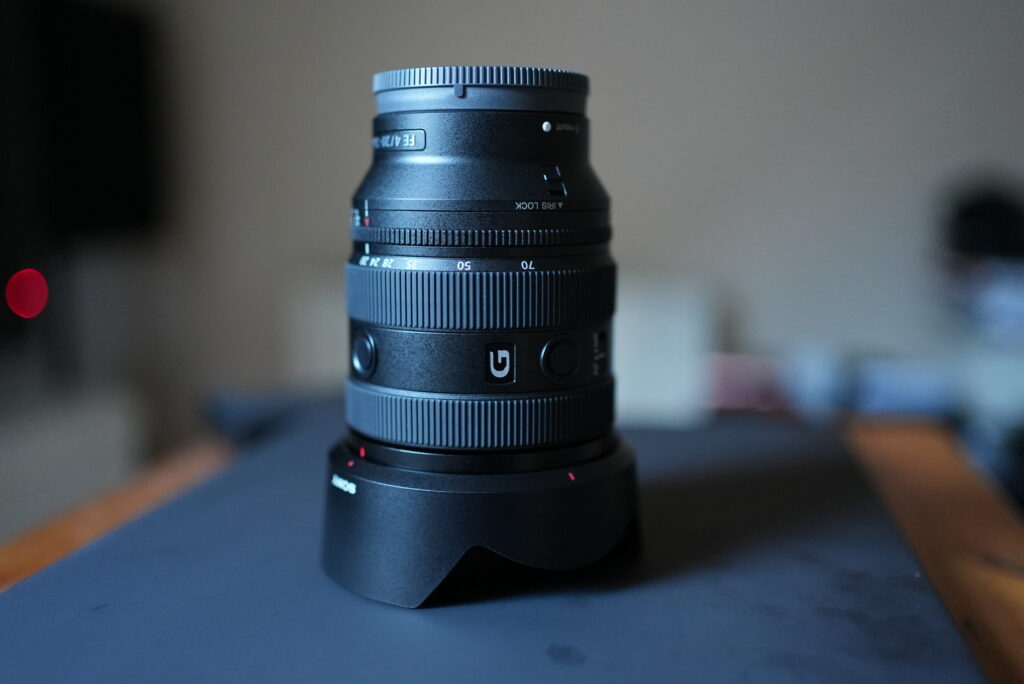
After having played enough with shallow depth of field and after having shot a lot on my Leica M6. I feel like I can finally enjoy deep depth of field pictures and therefore focus more on composition.
I am currently looking for a zoom lens to add to my arsenal, especially for my video work. To be able to use one lens for most situation is the kind of polyvalence I need to shoot different scenarios quickly. Having to hassle with primes in a documentary style video for example, is just not a viable option since you’ll most likely miss the shot.
Do you need a 2.8 aperture ?
This one is a very touchy and subjective subject. Of course, having f/2.8 doesn’t hurt since you can always close down to f/4. The question is: is it worth carrying more weight and paying extra money for an extra stop ?
It all depends on your needs and the lenses you already own. When I first tried to shoot a video with my A7S III during daylight, it was impossible to stay below f4 and keep a 180° shutter angle.
For this, you’ll need a good variable ND such as the Nisi True Color VND. Even with this kind of VND it’s not guaranteed that you’ll be able to shoot at f/1.8, since there is no ISO 64 on most video-oriented cameras.
The most cinematic aperture
For me, f/2.8 aperture looks perfect on super 35mm and f/4 looks perfect on full frame 35mm cameras. The difference between f/2.8 and 4 is one stop. It means you’ll just have to bump your ISO one stop.
When it comes to shallow depth of field, standard zoom lenses at f/2.8 are decent but not the best. To be honest, it’s even hard to distinguish the two in certain conditions. I would say that on a medium to close-up shot, f4 is usually getting the full face or body in focus, whereas at 2.8, we only take a fraction of it, making it look less sharp but adding a tad more bokeh.
Precision
The f/4 aperture is quite perfect for getting what counts in perfect focus. For example, between 50mm and 70mm, at a decent distance, most of the face of the subject will be in focus, whereas the background should be blurry if at a distance.
This contrast between sharp details and blurry bits is what makes an image pop and feel like it has three dimensions. Sometimes at 2.8, you’ll only have one third of the face sharp and the nose out of focus, which will give a sensation of softness and imprecision.
At f4, the image is technically perfect, and the audience can focus on the story rather than being distracted by the out of focus elements. See the video below, where most of the shots don’t look as sharp as the one with the f/4 lens.
Why choose the Sony 20-70mm F4 G ?
Before answering this particular question, first we need to see who the main competitors of this lens are. Whenever I enter an ecosystem, I tend to stay within it. I’ve never bought a Sigma or Tamron lens in my life. For me, Sony lenses will most likely perform the best when it comes to autofocus and ergonomics.
Main competitors are : Sony 24-70mm F2.8 GM, Sony 24-70mm F2.8 GM II, Sony 24-105mm F4, Sony Zeiss 24-70mm F4 and perhaps Sony 16-35mm F4 PZ.
To be more precise only 3 of those lenses are real competitors when it comes to comparable focal length, size and optical quality.
Compared to the Sony 24-70mm F2.8 GM II
Let’s address the elephant in the room, the Sony 24-70mm F2.8 GM II. Well, this lens is great, but it’s 2399 euros. It’s a marvel of a lens, but ouch, at this price, I would even consider going for the first time out of the eco system with Sigma.
It’s just a standard zoom lens, and no matter how good it is, it will only produce “standard pictures”. No improvements in optical quality can create pictures out of the ordinary within these focal lengths and apertures.
In video, it’s even harder to tell the difference between the first and second versions. The only way to tell the difference is to put them side by side and pixel peep, which is definitely not something regular viewers do.
The price difference between the first and the second version is more than double. That’s insane.
Compared to the Sony 24-105mm F4 G
This is an older lens, released in 2017, way before new technology such as dual focus motors and linear focus pulling were introduced.
I’ve heard that that lens is para-focal and has a very strong performance when it comes to focus breathing. I think this lens is still very good and very polyvalent. Perhaps the only downside is the corner sharpness.
Anyway, this is a matter of opinion, but for me, I would rather have a wider focal length than a longer one. I already own the 85mm 1.8, which is already on the limit of being too telephoto for cinema and is only worth using for close-ups.
On the other hand, 20mm is quite handy for multiple applications: vlogging, shooting in tight spaces like interiors, and giving a good idea of the scale of a location without the need of removing the lens.
One thing people also tend to forget is that, you can almost always get closer to your subject, but it is often impossible to get farther in interiors.
How does the Sony FE 20-70mm F4 G performs ?
Build quality and ergonomics
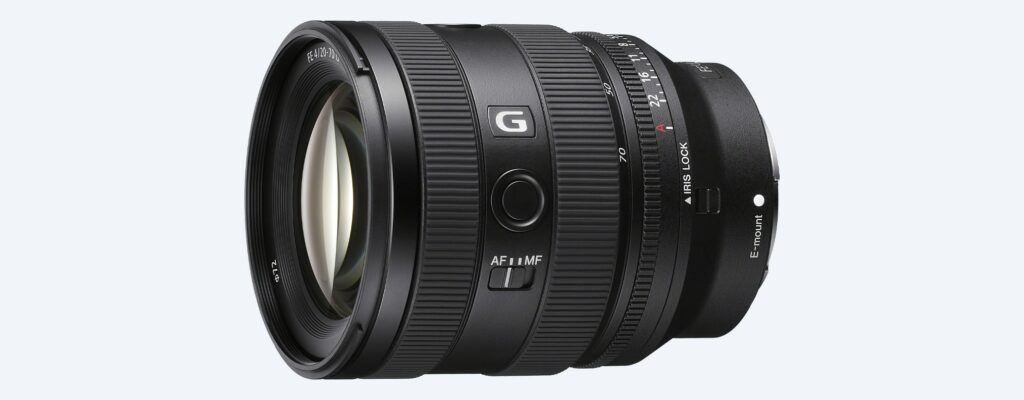
The Sony 20-70mm F4 G is very well built. It’s a G lens with all the new ergonomics found in newer lenses.
It has a de-clickable aperture ring, a lock switch and two custom buttons. It uses the newer Sony focusing motors, which improve both performance and linear manual focus pulls.
It is weather-sealed and has a rubber gasket on the back. This is honestly expected from most modern Sony lenses.
I have a 14mm 1.8 GM lens, and to be honest, it’s 90% the same quality. Perhaps the plastic is different, but the feel is very similar.
It’s relatively light at 488 g compared to the two other Sony lenses. It’s the lightest, but compared to primes, it’s still a bit tiring to the hands after a while.
The lens is overall very enjoyable to use. There are no issues when it comes to feel or ergonomics. It comes with a bag and a quite short lens hood for a 20mm. The filter thread size is 72mm.
Performance
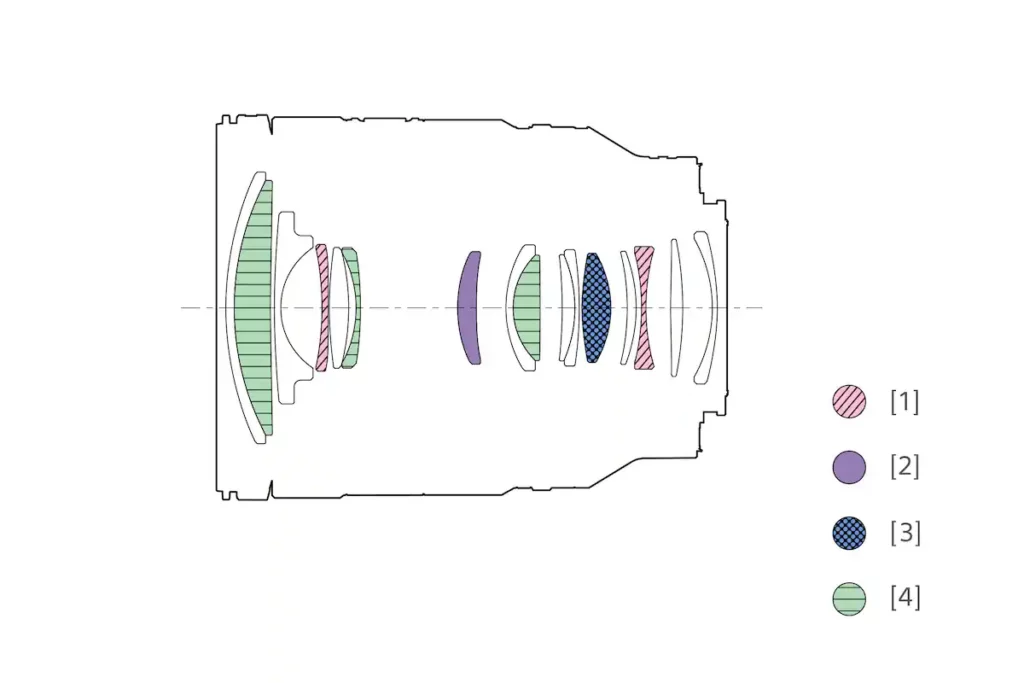
Sharpness
This lens sharpness is excellent. It’s not as good as the new 24-70mm 2.8 GM II in the corners, but it’s still very sharp in the center and decently sharp in the corners before 5.6, where it’s very crisp. Some people even say that this lens is overall sharper than the GM II at f4, especially in the center.
Where it shines compared to the 2.8 GM II, is with chromatic aberration. There are no chromatic aberrations whatsoever with this lens. Admittedly, these problems are gone too after stopping down with the more expensive lens.
Distortion

Like most modern Sony Lenses which vignette and have distortion, are corrected within the camera software. This lens too exhibits strong barrel distortion at the wide end and pin cushion distortion at 70mm.
If this is not a big deal when you are using a Sony camera, I feel like it’s always better to correct it physically, so these lenses can be used on other systems too.
I understand that it’s the most efficient and least expensive way to produce lenses these days.
The focal range

The focal range is great; as a matter of fact, I think it’s the most polyvalent range you can get within a single lens. The only thing that can beat this is a combo of a 16-35 and a 24-70 lens.
But having the luxury of not switching lenses is quite a comfortable experience.
The F/4 constant aperture

Let’s be honest, 2.8 is always more desirable than f4 when it comes to zoom lenses. Unless weight is also an important criteria. Did I wish this lens had a wider aperture ? Sure. But what would be the cost of it?
Lens design is always a compromise. At the present time, it’s hard to get a cheap lens with stellar performance, a wide aperture, and an improved focal range.
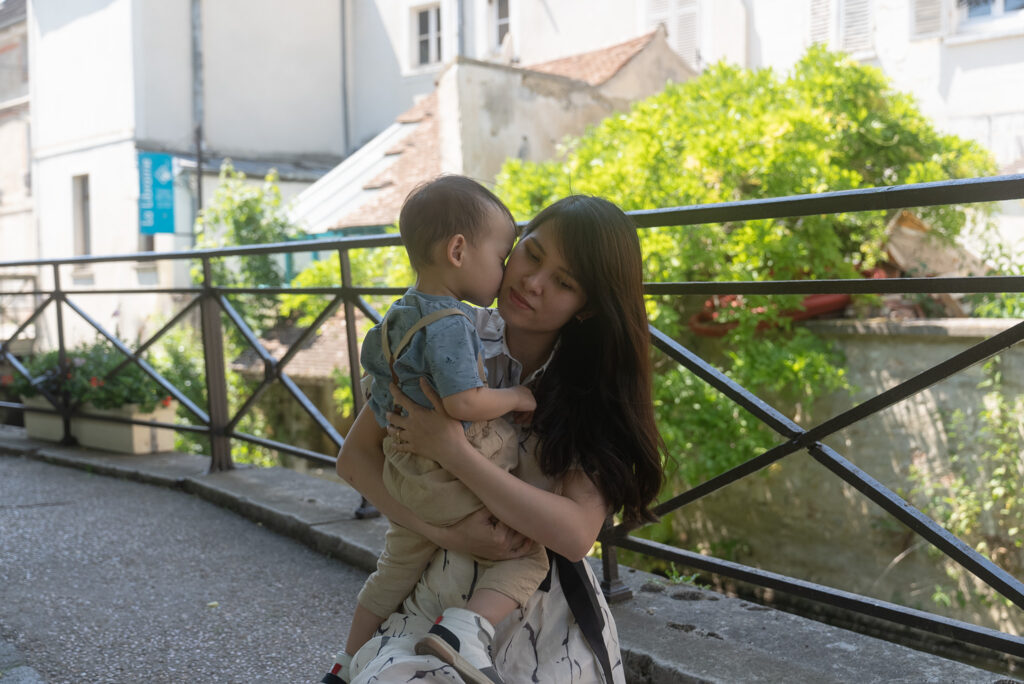
Let’s put it this way, this lens is perfect for people who are willing to switch back to prime lenses when they need a very shallow depth of field or to shoot at night.
The issue is that this vignetting is present up to 35 mm when you have two stacked filters. According to the manufacturer, NiSi, vignetting should only occur below 24 mm. I still have to make some more tests with a regular 24-70mm lens to see if this vignetting is present.
When doing documentary work, such as travel logs, you need most things in focus anyway, not to say that this lens is not capable of producing a beautiful shallow depth of field.
The price
The price of this lens in France is 1599 euros. In the USA it’s 1099 dollars, it’s quite a steep difference, and this is what will determine if this lens is a good value for you or not, or if it’s better for you to invest more money to get the new GM II Standard lens.
Some unexpected issues
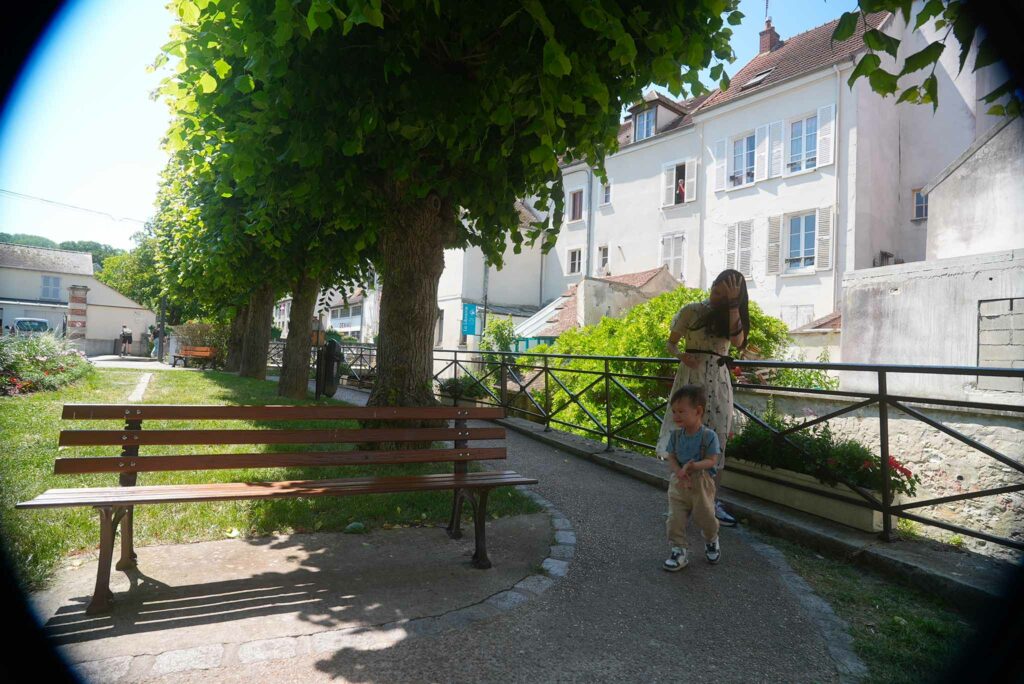
One of the main issues I ran into was getting strong vignetting when I was using two stacked filters, such as variable ND and a 1/4 black mist filter, with one step-up ring from 72 to 82mm.
The problem is that this vignetting is present up to 35 mm when you have two stacked filters. According to the manufacturer NiSi, vignetting should only occur below 24 mm. I still need to run a few tests with a standard 24-70 mm lens to see if the vignetting is present.
I am still looking for a solution today, so if you find one, don’t hesitate to put it in the comment section. For now, I have to remove the variable ND and close the aperture to keep a 180° shutter angle.
OUR SPONSOR OF THE DAY : NEONNIGHT.FR
Verdict
8.2 out of 10
The Sony 20-70mm F4 G is a great lens, and if, like me, you are not afraid to stop down your aperture and work a little more on your compositions, this lens can be the only zoom you’ll ever need.
Perhaps the only condition required is that you also have some fast primes on the side to deal with low lights and produce an extreme shallow depth of field when you need it.
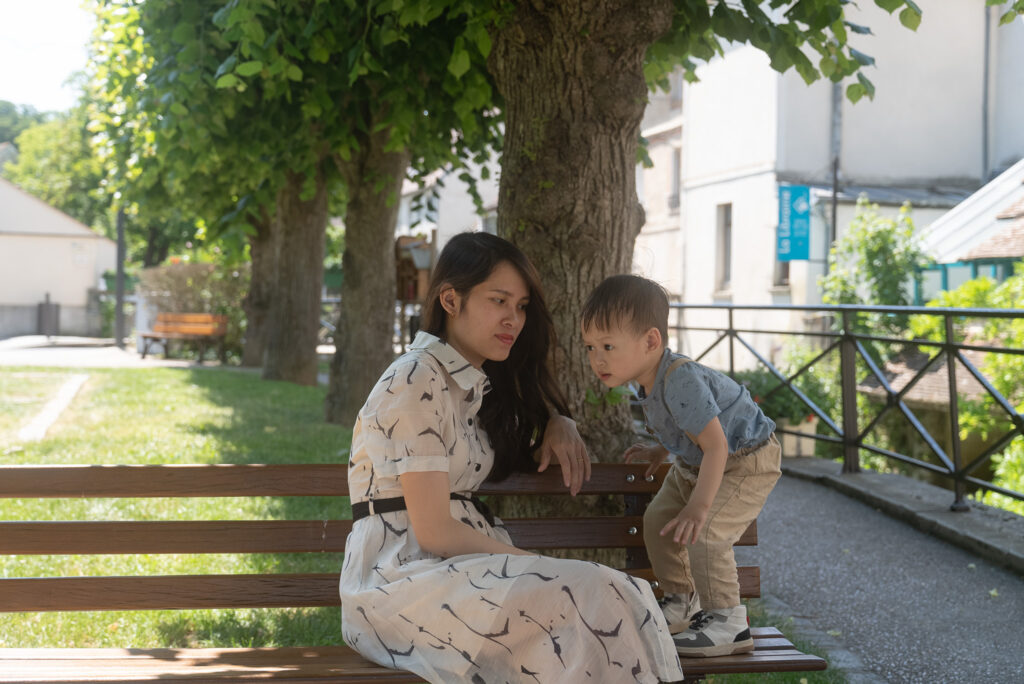
The image quality and ergonomics of this lens are excellent; 90% of what you shoot during daylight can be taken with this lens, which shows how versatile this combination is.
When it comes to price, 1599 euros is too expensive for a lens like this in my opinion, but if you can get a hold of one in Hong Kong, the USA, or used, this is the perfect choice for people who are looking for a light standard zoom lens with a bit of spice on the wide end.
Informations
Sony SEL2070G
Website : https://www.sony.fr/interchangeable-lens-cameras
Page of product : https://www.sony.fr/electronics/objectifs-appareil-photo/sel2070g
Youtube : https://www.youtube.com/@ImagingbySony
Video Production : https://www.neonnight.fr
Samples from our work :
Packshots
https://www.neonnight.fr/en/portfolio/viwone-packshots-dark
https://www.neonnight.fr/en/portfolio/viwone-packshots-bright
Studio Portraits
https://www.neonnight.fr/en/portfolio/viwone-create-together-classic
https://www.neonnight.fr/en/portfolio/personal-hoa-thanh




GIPHY App Key not set. Please check settings
One Comment